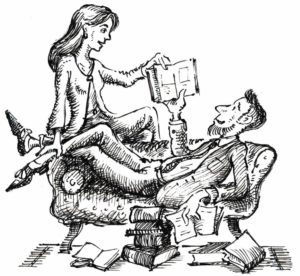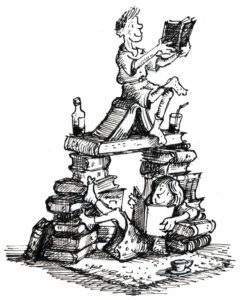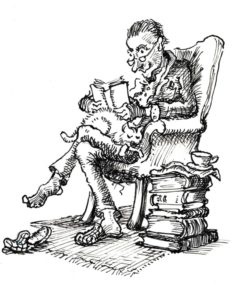Lennon & McCartney, She’s Leaving Home
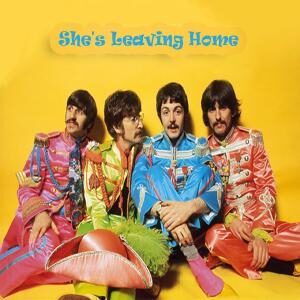 SHE’S LEAVING HOME, a sublime yet sorrowful song, is one of the more unusual in the Beatles’ catalogue. Like Eleanor Rigby from the earlier Revolver LP it did not include any band instrumental but relied exclusively on a string orchestra (Yesterday employed only a quartet). And only two of the Beatles, Paul and John, sang on the track. McCartney, in a fit of grandiosity and eager to record his new song, had summoned producer and arranger George Martin with one day’s notice to arrange and record. As Martin was busy (in fact producing Cilla Black), an impetuous McCartney requested Mike Leander to arrange a score. Leander was to achieve fame as a producer in the later glam rock era for his work with Gary Glitter, but for now he had worked already with many in the Beatles’ circle of friendships – Marianne Faithfull, Joe Cocker and the Rolling Stones (he had scored the tacky arrangement for As Tears Go By – and he had co-written two songs for Peter and Gordon; he was later to annotate music for the Magical Mystery Tour film. Leander finished his score in time for McCartney to work with in the studio on the next day, this the necessary rehearsal work before George Martin was available to conduct a full orchestra and begin to produce the track a few days later. Seemingly Martin was upset by McCartney’s impatient stampeding, and this is the only occasion that Martin was not responsible for a Beatles arrangement, until, of course, Phil Spector’s desecration of three tracks on the Let It Be album (though these post-date the Beatles as a functioning group, and was certainly well after all four Beatles had lost interest in the Let It Be project).
SHE’S LEAVING HOME, a sublime yet sorrowful song, is one of the more unusual in the Beatles’ catalogue. Like Eleanor Rigby from the earlier Revolver LP it did not include any band instrumental but relied exclusively on a string orchestra (Yesterday employed only a quartet). And only two of the Beatles, Paul and John, sang on the track. McCartney, in a fit of grandiosity and eager to record his new song, had summoned producer and arranger George Martin with one day’s notice to arrange and record. As Martin was busy (in fact producing Cilla Black), an impetuous McCartney requested Mike Leander to arrange a score. Leander was to achieve fame as a producer in the later glam rock era for his work with Gary Glitter, but for now he had worked already with many in the Beatles’ circle of friendships – Marianne Faithfull, Joe Cocker and the Rolling Stones (he had scored the tacky arrangement for As Tears Go By – and he had co-written two songs for Peter and Gordon; he was later to annotate music for the Magical Mystery Tour film. Leander finished his score in time for McCartney to work with in the studio on the next day, this the necessary rehearsal work before George Martin was available to conduct a full orchestra and begin to produce the track a few days later. Seemingly Martin was upset by McCartney’s impatient stampeding, and this is the only occasion that Martin was not responsible for a Beatles arrangement, until, of course, Phil Spector’s desecration of three tracks on the Let It Be album (though these post-date the Beatles as a functioning group, and was certainly well after all four Beatles had lost interest in the Let It Be project).
Leander’s arrangement of She’s Leaving Home is taut and far more dense than George Martin’s more fleet of foot musical signature always had been, and no doubt Martin would have done a more skilful job. But the arrangement’s counter melodies have become integral to the song, and its fast paced stiffness served to reinforce the song’s schizophrenic use of its two narrative voices. The main voice is a passive, impersonal one; the second voice is the parents of the song’s subject, who are involved emotionally yet show naivety and have little self-awareness. The fast movement of Leander’s arrangement also prevented the song lapsing into cloying sentimentality. McCartney was often involved in the scoring of the Beatle’s orchestral arrangements at this mid-point of the Beatle’s narrative, but hitherto he tended to contribute to individual lines within a song (the french horn solo in For No One or the piccolo trumpet solo in Penny Lane), He had not developed confidence enough to be involved in the full orchestration other than in overall descriptive terms and gesture. It is highly improbable therefore that McCartney was involved much in this arrangement’s concept, and it is thought that George Martin, not altogether happy with it, did make some adjustment. Endless comment has been made about the differing speeds of the mono and the stereo releases of this song; it is more likely that these different issues were by mistake than by design.
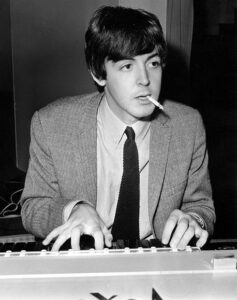 She’s Leaving Home is referred to by George Martin as “not, strictly speaking, a Beatles song at all;” it was, he claimed, “pure McCartney, from start to finish.” There is some dissent to this view. Lennon and McCartney, as always, were not forensic in their memory. McCartney had suggested that Lennon had some input on the chorus melody (or at least the high sustained notes), but did not contribute much more to the song. And although one chord only is sustained throughout the first ten bars of the chorus (McCartney spoke of this being Lennon’s artifice), the melody then develops in a flow of lyricism unlikely to have been within Lennon’s compass. Lennon’s off-beat footprint can be seen perhaps in the lyrics of the chorus. Here the obvious has been ignored. “Love is the one thing that money can’t buy” is the anticipated line, but this would have been appropriation from their previous more childish ways: the pubescent patois that had come so readily when performing in the Cavern Club and their pre-American jaunts (the days of rhyming predictability with songs such as Money Can’t Buy Me Love) were now to be avoided if they were to consider themselves as more than pop stars. So “love” is supplanted by the less obvious “fun:”not only to avoid repetition of the songwriters’ earlier success, but also as a poignant and telling disclosure within the song, to tell of the parent’s misinterpretation of their daughter’s behaviour, and of the daughter’s reasons for flying from the family home.
She’s Leaving Home is referred to by George Martin as “not, strictly speaking, a Beatles song at all;” it was, he claimed, “pure McCartney, from start to finish.” There is some dissent to this view. Lennon and McCartney, as always, were not forensic in their memory. McCartney had suggested that Lennon had some input on the chorus melody (or at least the high sustained notes), but did not contribute much more to the song. And although one chord only is sustained throughout the first ten bars of the chorus (McCartney spoke of this being Lennon’s artifice), the melody then develops in a flow of lyricism unlikely to have been within Lennon’s compass. Lennon’s off-beat footprint can be seen perhaps in the lyrics of the chorus. Here the obvious has been ignored. “Love is the one thing that money can’t buy” is the anticipated line, but this would have been appropriation from their previous more childish ways: the pubescent patois that had come so readily when performing in the Cavern Club and their pre-American jaunts (the days of rhyming predictability with songs such as Money Can’t Buy Me Love) were now to be avoided if they were to consider themselves as more than pop stars. So “love” is supplanted by the less obvious “fun:”not only to avoid repetition of the songwriters’ earlier success, but also as a poignant and telling disclosure within the song, to tell of the parent’s misinterpretation of their daughter’s behaviour, and of the daughter’s reasons for flying from the family home.
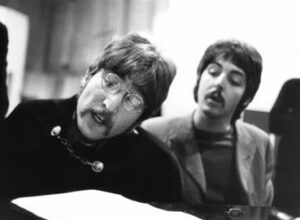 Certainly it can be doubted if Lennon’s musical ear and ken would have been able to hear the natural lyricism and subtle melodic lilt that comprise the song. Lennon’s melodic presence on previous albums, especially Help! and Rubber Soul, was assured, but his songwriting tended to be formulaic, he rarely modulated as comfortably as McCartney did with his melodies, and his songs tended to consist of repeated musical phrases, even if these were lyrical; Norwegian Wood or Girl are two such examples with memorable and melodic lines, but they are never developed in the song. (Nowhere Man is a slight exception, though its tune, like Norwegian Wood, uses a phrase in sequence rather than a flowing linear line). In My Life was perhaps Lennon’s greatest song to this date, though this was the cause of the most significant Lennon and McCartney memory spat. McCartney in fact claimed to have written the melody himself, and indeed that would seem not so unlikely for, if Lennon had a great feel for a hook, his songwriting ambition didn’t include developing any melodic gift per se; indeed If I Fell from 1964, the brilliant Strawberry Fields Forever and Jealous Guy nearly a decade later, are all but his only melodies with true a development, shape and definition. Until he was able to take on the personal and describe his internal world, Lennon’s songwriting could be said at this point in the Beatle’s career to have lost direction and be in the doldrums; McCartney’s lyricism knew no bounds: Michelle, Yesterday, Penny Lane, even When I’m Sixty-four (written by McCartney when 16), or the later Beatles’ songs like Hey Jude or Blackbird, displayed melody that developed. The use of a nursery rhyme mode in She’s Leaving Home, and its leaping upward seventh interval in the first phrase is pure McCartney, as George Martin posits.
Certainly it can be doubted if Lennon’s musical ear and ken would have been able to hear the natural lyricism and subtle melodic lilt that comprise the song. Lennon’s melodic presence on previous albums, especially Help! and Rubber Soul, was assured, but his songwriting tended to be formulaic, he rarely modulated as comfortably as McCartney did with his melodies, and his songs tended to consist of repeated musical phrases, even if these were lyrical; Norwegian Wood or Girl are two such examples with memorable and melodic lines, but they are never developed in the song. (Nowhere Man is a slight exception, though its tune, like Norwegian Wood, uses a phrase in sequence rather than a flowing linear line). In My Life was perhaps Lennon’s greatest song to this date, though this was the cause of the most significant Lennon and McCartney memory spat. McCartney in fact claimed to have written the melody himself, and indeed that would seem not so unlikely for, if Lennon had a great feel for a hook, his songwriting ambition didn’t include developing any melodic gift per se; indeed If I Fell from 1964, the brilliant Strawberry Fields Forever and Jealous Guy nearly a decade later, are all but his only melodies with true a development, shape and definition. Until he was able to take on the personal and describe his internal world, Lennon’s songwriting could be said at this point in the Beatle’s career to have lost direction and be in the doldrums; McCartney’s lyricism knew no bounds: Michelle, Yesterday, Penny Lane, even When I’m Sixty-four (written by McCartney when 16), or the later Beatles’ songs like Hey Jude or Blackbird, displayed melody that developed. The use of a nursery rhyme mode in She’s Leaving Home, and its leaping upward seventh interval in the first phrase is pure McCartney, as George Martin posits.
This is a song very much of its time. The phrase “generation gap” was of very recent origin, and its notion has been cited often as the wellspring of rock and roll, the teenage assumption of different tastes to their parents. The Who were accommodating of this new permissive world: My Generation comes down clearly on the side of the rebellious teenager. The Kinks too played a straight bat with Rosie Won’t You Please Come Home: the song is more about lifestyle contrast and social climbing than rebellious dispute. But She’s Leaving Home is far more sympathetic in its understanding of the family dynamic and deals with both sides of the divide without sitting on the fence. Both Lennon and McCartney had lost their mothers as teenagers (one of their reasons they had bonded so well), and their understanding of loss perhaps allowed them to include such insight. If there is a hint of disdain for the parents’ ignorance of their daughter’s situation and her need for freedom, then that is softened by the momentum of the song and the functional, non-saccharine aspect of the arrangement with its abundance of seventh and ninth chords. McCartney’s vocal is masterful: restrained, aloof and conversational when need be yet with a withdrawn pathos when called upon; it evokes a pity, even a subdued sympathy, for the parents. However McCartney’s antiphon call of the song is knocked for six by Lennon’s antiphon response, and his closing line of the chorus, “bye bye,” which is sung over McCartney’s falsetto choirboy rendition in the chorus, is like Pilate’s hand washing, and the parents are here revealed to say: she’s gone, nothing we can do, never mind then. So there is a knife in the belly of this song, a wound that exposes the polar opposite of its pathos. This is why it is truly a great song.
With a natural and unerring ear McCartney, if he chose to, could churn out song pastiche after pastiche. At first they sit quaint and snug within the Beatles’ output: Got To Get You Into My Life as a Motown resting point on Revolver works well, and so too perhaps When I’m Sixty-four on Sgt. Pepper’s Lonely Hearts Club Band, the spit of comedy hall routine that blends well with Lennon’s found lyric for the Being For The Benefit of Mr Kite, all fairground sawdust and calliope. 1967 sees McCartney on the cusp of rock erudition yet lurching so often towards banality; hereafter he strays readily into a pot-pourri of parody and lame musical farrago. As swinging London and World Cup fever are replaced by an alternative culture of experimental theatre, the Roundhouse and Pink Floyd’s light shows, McCartney’s use to the group at producing classic pop at the drop of a hat became dubious and almost detrimental to the Beatles’ mythology. Hello, Goodbye was likely to have been the first of his songs that overly offended Lennon, and Lennon pushed for I Am the Walrus to be the A-side of the single; previously it had been rivalry that had driven Lennon to vie for an A-side, now it was brand sensitivity. A crescendo of vocal disquiet about McCartney’s bubble gum aspect ensued, and how it is that Rocky Raccoon or Maxwell’s Silver Hammer, natty and ornate though they are, take such billing on future albums must be down to Paul’s overbearing nature, by all accounts, and his fellow Beatles’ accommodation and habitual applause of him. Songs had to be shoehorned out of Lennon once he had ambition and life outside of the group; McCartney’s urbane lava was like candy floss and was secreted too diffusely and too often.
The song’s whereabouts in the Beatles timeline is crucial. As novice and enthusiastic pop stars five years earlier, as their touring became more triumphant and as their early records were pumped out rapidly and to more acclaim, they barely stopped for breath. Their juvenile aping of the American rock’n’roll mythology was writ large in their early songwriting, as they oozed American ease and inherited its cultural litany. Yet by 1967 and Sgt. Pepper the Beatles were exploring the roots of their Englishness with a confident English accent, their sense of place and experience of England’s industrial hinterland was pushed to the fore, and the streets and demotic sounds of their Liverpudlian childhoods were worn proudly as songwriting medals. For Lennon and McCartney, rock stars in England, folk song, even church music, fairground sounds, Al Bowley and the humour of the Goons become eventually as important as the blues, Sister Rosetta Tharpe and Little Richard’s early foray into gospel sound. The barber’s in Penny Lane, Father McKenzie’s churchyard and traffic wardens are as vital an experience as the railroads of the American South and Elvis’ jailhouse. The day-to-day debris of English life – the mixing of the observant with the trite, the banal with the profound – the newspaper clippings that comprise A Day in the Life, their own biographies and of those around them, become their lyrical scrapbook. She’s Leaving Home has newspaper jotting as its starting point: Melanie Coe’s abscondence from her family home was front page fodder for the Daily Mail. In fact Coe stole away to meet a croupier rather than a man from the motor trade (a profession, said McCartney, more redolent of sleaze with the car’s back seat, windows wound down and a bag of sweeties), and she left mid-afternoon rather than at five o’clock in the morning. As symptomatic as it is humourous, McCartney’s recounting of when he and Lennon had composed She Loves You in the back room of his father’s house, and then proudly sang it to his father when completed, is relevant. His father applauded the song, but questioned if they should be singing “she loves you yes, yes, yes” rather than “yeh, yeh, yeh?” This observation that could be met only with merriment. But by 1967 English parlance and colloquialism is used comfortably. McCartney lilted his glottal accent when he sang the words “clutching her handkerchief” or “dressing gown” (his Liverpudlian accent to the fore also in When I’m Sixty-four), as though he was reciting evensong in an Oxford college chapel; Lennon in the chorus assumed the tone of his Aunt Mimi, whose familial lexicon it is thought he may have been reciting. She’s Leaving Home, then,  exhibits McCartney’s Englishness and a rare gift for the telling of the poignant, made personal to each of us by its use of fussy detail. The landscape of Englishness on display in She’s Leaving Home should have been vital for McCartney and could have offered him something to steady himself by as a songwriter. Lennon it was who fled England’s shores, McCartney it was who hid himself in rural England and played the jolly farmer: vaulting ambition versus the idyllic, perdition versus the pastoral (and Lennon, of course, paid the price). But McCartney in later years, certainly once the Beatles had flown their nest and Lennon was no longer his antidote, busied himself instead in a cornucopia of the whimsical, the kitsch and nostalgic; as his solo career progressed he was prone more to the unfinished, certainly the pointless – Silly Love Songs one of the many nadirs of his later career. The astute observation of English life fell by the wayside and his deft contribution to musical enquiry went overboard as he mimicked every fad and musical dead end.
exhibits McCartney’s Englishness and a rare gift for the telling of the poignant, made personal to each of us by its use of fussy detail. The landscape of Englishness on display in She’s Leaving Home should have been vital for McCartney and could have offered him something to steady himself by as a songwriter. Lennon it was who fled England’s shores, McCartney it was who hid himself in rural England and played the jolly farmer: vaulting ambition versus the idyllic, perdition versus the pastoral (and Lennon, of course, paid the price). But McCartney in later years, certainly once the Beatles had flown their nest and Lennon was no longer his antidote, busied himself instead in a cornucopia of the whimsical, the kitsch and nostalgic; as his solo career progressed he was prone more to the unfinished, certainly the pointless – Silly Love Songs one of the many nadirs of his later career. The astute observation of English life fell by the wayside and his deft contribution to musical enquiry went overboard as he mimicked every fad and musical dead end.
She’s Leaving Home is one of the summits on McCartney’s timeline as a songwriter, even if it is not one of his greatest songs, and there is the nub of McCartney, his Achilles’ heel. Each of his best songs are narrative driven, they each tell a story, yet they are never McCartney’s own story. Eleanor Rigby, For No One, Hey Jude, Blackbird, Let It Be, Junk, Teddy Boy, Another Day, the much later London Town (this track has McCartney’s most superlative singing), each in their own way disclose loneliness and expose the isolated world of the individual. But none of these songs are in the first person. Lennon had no such need to sing as a third person narrator. He could plunder his inner world and its demons, and, for all the poignancy on offer in She’s Leaving Home, it only reveals more and more as time lends distance, how repressed McCartney has been as a songwriter, however musically brilliant. The rock and roll song is a genre that has survived its severe musical limitations because it unearths the personal and the instinctive in a way that earlier generations of tunesmiths never could. McCartney’s songs – Maybe I’m Amazed to one side – are neither personal nor instinctive, they are fashioned as gem stones, their pedigree is Tin Pan Alley, their justification an Ivor Novello award and an excess of wealth. Yet whilst Lennon could write of the intimate – songs like Julia and Mother (and do so in an evening before a recording session) – McCartney’s riposte is lacklustre always. Much of his early songwriting career had been nurtured by emotional displacement activity: he wrote out of other people’s experience, often brilliantly but this was never developed, and one assumes that he didn’t possess the emotional or mental stamina. But perhaps also McCartney’s fingers had been burnt by the experience of being a Beatle, his need for subsequent privacy all but paramount: this may have diminished the reservoir of his songwriting stock and afforded a retreat to his psyche only at times of crisis, and, in broad terms, there just have never been many of them. The troubled denouement of the Beatles begat Maybe I’m Amazed, truly his greatest song, and otherwise, in spite of an innate and supreme musical talent, his scorecard here is all but empty.



